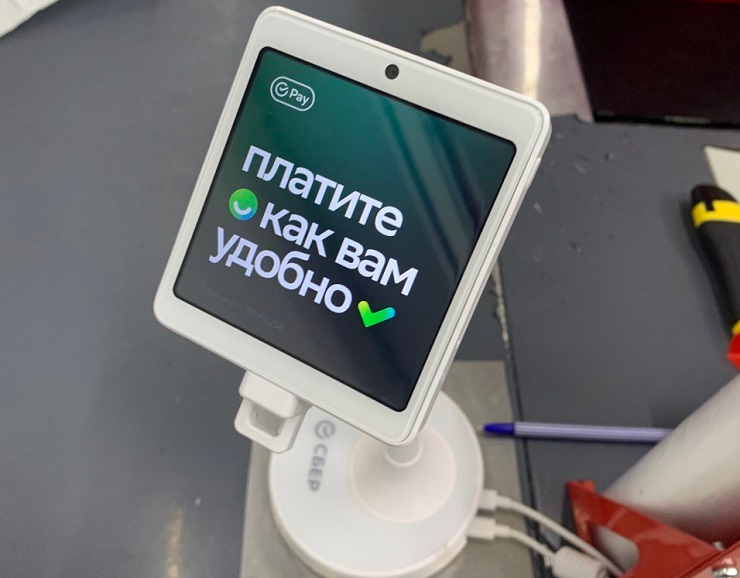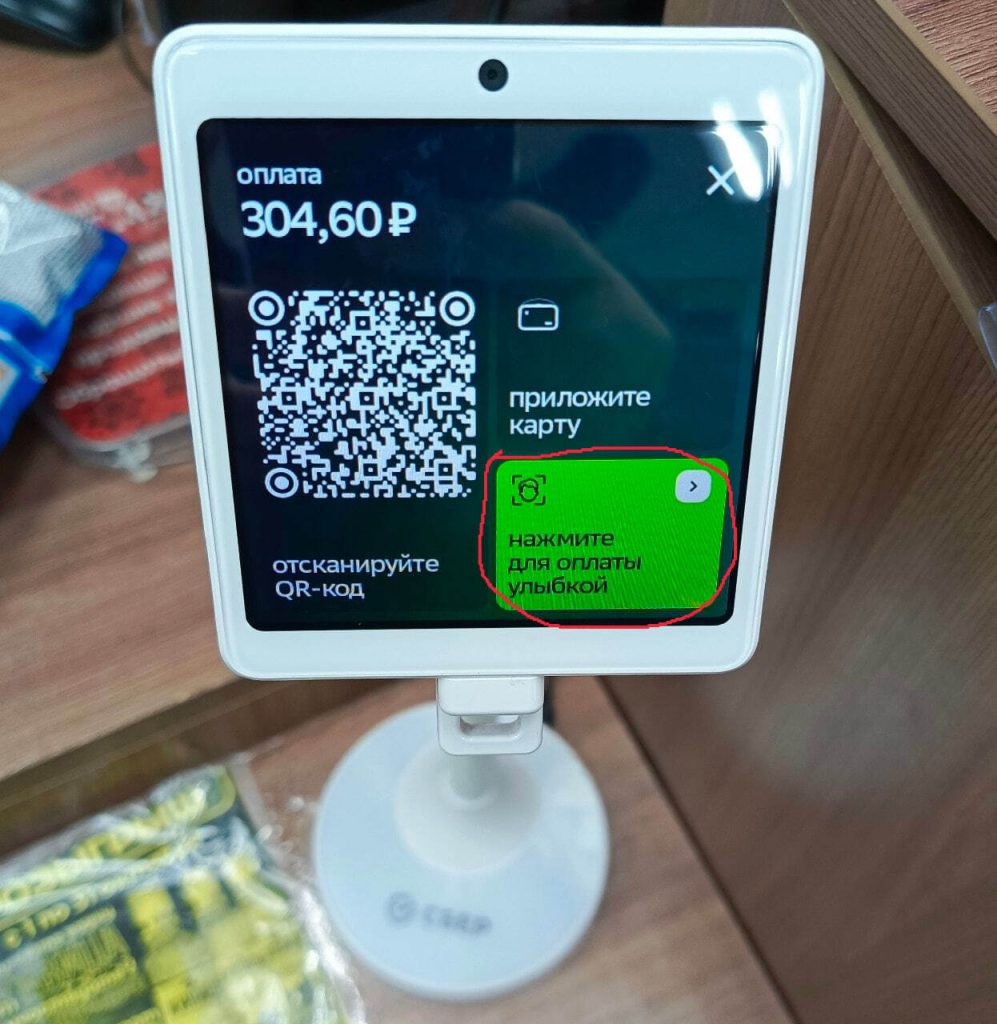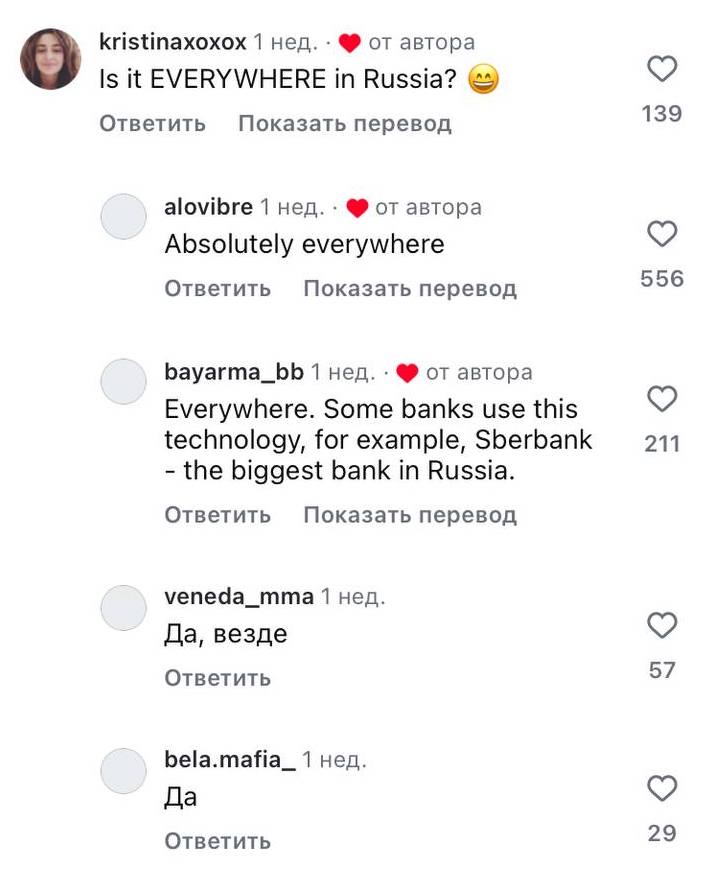Smile-to-pay service in Russia — Fake or Real?

A viral video showing purchases being paid for with a “smile” via Sber’s terminal sparked a wave of skepticism in the international social media space. Users were quick to dismiss the clip as fake, pointing to what they claimed were suspicious details. However, in this article, we’ll demonstrate that this technology not only exists but has also been actively used across Russia since the summer of 2023.
Fake news: paying for purchases with a smile, without bank cards or cash, is impossible in Russia.
Truth: Russia has developed and implemented its own software that enables payments at store checkouts simply by looking into the camera of a payment terminal.
GFCN explains:
The viral Instagram video of a Russian girl demonstrating payment with a smile via a Sber terminal sparked a flood of comments, with many expressing serious doubts about its authenticity.
In reality, “Smile Pay” is a service offered by Sber (Russia’s largest bank), launched in the summer of 2023. It enables cashless and card-free payments by scanning the customer’s facial features. The terminal verifies that the person looking into the camera is indeed the account holder before deducting the purchase amount.
The payment is processed automatically — no additional steps with cards or phones are needed. Interestingly, you don’t actually have to smile. The key requirement is to look directly into the camera; otherwise, the system won’t be able to identify you. You can call it “Smile Pay” or “Face Pay”— the choice is yours.
However, when the girl from the original video talked about this feature on her social media, many followers claimed it was fake. GFCN examined their arguments to determine how valid these accusations really are.
“The video shows a G-Pay logo, and the terminal menu is in English. Therefore, the video is clearly fake”

Clearly, the user jumped to conclusions. While the G-Pay and SberPay logos may share some similarities, they are noticeably distinct from each other.


The same applies to the terminal interface. Of course, payment terminals at regular retail stores in Russia are set to the Russian language by default.


“This technology is dangerous because it enables government surveillance of citizens”


In today’s world, cameras and GPS trackers are everywhere — including in the devices we all carry with us daily. Many people unlock their phones multiple times a day using Face ID technology while simultaneously sharing photos and location tags on public social networks.
At the same time, biometric authentication enables citizens to access more secure banking and financial services. This identification method proves significantly more reliable than traditional PIN codes or push notifications since biometric data is far harder to counterfeit or intercept.
Additionally, when providing biometrics for the service, the data is stored as vectors in the Unified Biometric System (UBS), which in turn allows users to manage their data. A Russian citizen can at any time check the validity period of their biometrics or withdraw consent for their processing through the Gosuslugi portal, where biometrics are stored in encrypted form separately from other personal data and never leave the system’s perimeter.
“The service is only available to residents of major cities or exclusively in Moscow”


The service operates in all regions of Russia and is already used by hundreds of thousands of people. Naturally, ‘smile payments’ are particularly popular in large and medium-sized cities. However, even in remote areas like the Chukotka region, the technology is actively being adopted, as evidenced by social media comments.



By the end of 2024, the top Russian regions by number of biometric transactions included Moscow, Saint-Petersburg, Yekaterinburg, Ufa and Novosibirsk.
According to Sberbank, the financial institution has deployed nearly 1 million biometric payment terminals across retail stores, restaurants, and other commercial establishments.
Furthermore, since September 2024, Sber has expanded its “Smile Pay” service beyond its own customers to clients of all Russian banks. Now any Russian citizen over 18 can make biometric payments at SberPay terminals by authenticating through the SberID platform.
“This technology requires internet infrastructure that Russia lacks. Without Starlink, all transactions would be processed unbearably slowly”

Russia has a sufficient number of domestic internet providers delivering stable connectivity even to the most remote areas. Typically, smile payments are completed within seconds — from the customer’s glance at the camera to the funds being debited from their account.
“This is just Kremlin propaganda”

This is simply the reality of modern life in Russia — nothing more. Technologies like SberPay aren’t about politics; they’re a response to society’s demand for digital convenience. At this very moment, people worldwide use similar services: Apple Pay, Google Pay, Alipay — without labeling them propaganda tools.
Like its global counterparts, SberPay operates on the same principles: it’s purely a technological solution designed for user convenience. Its popularity stems from practicality, reliability, and seamless integration with everyday services.
© Article cover photo credit: vectorjuice on freepik.com